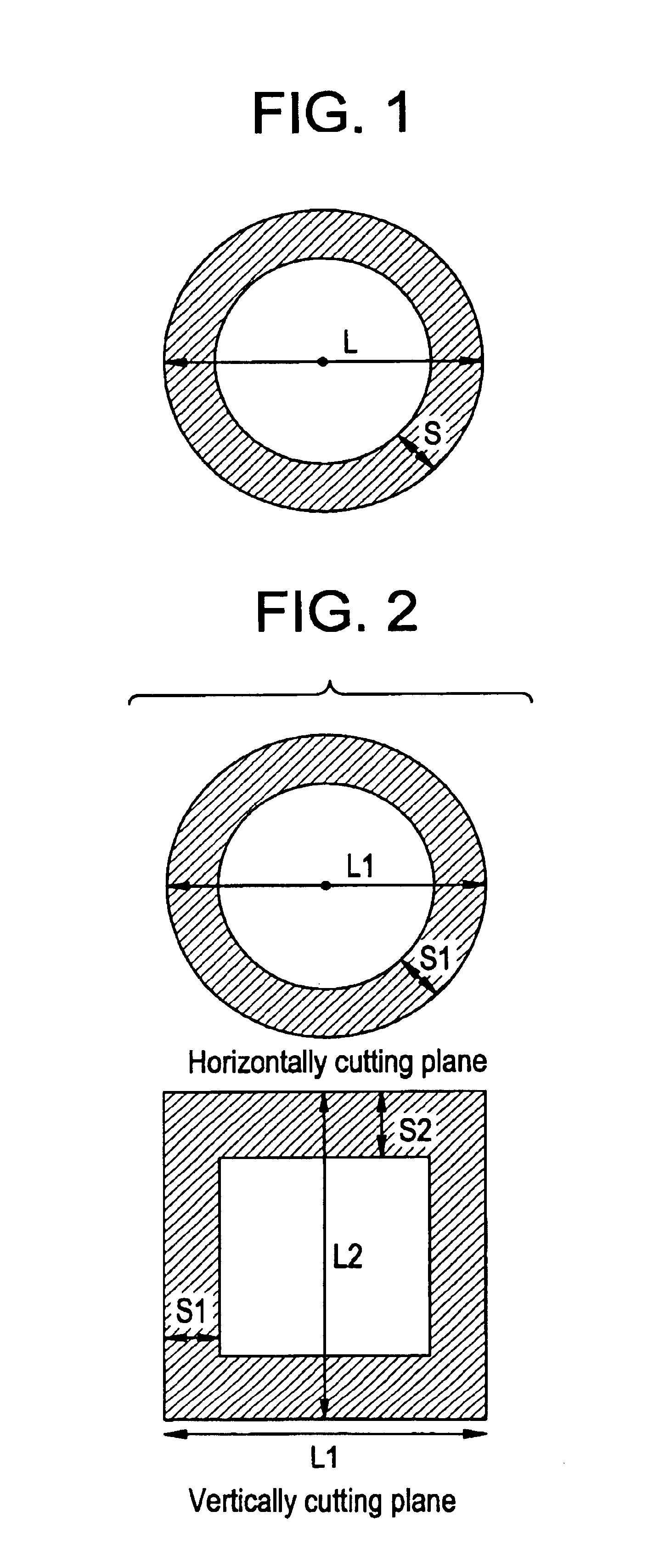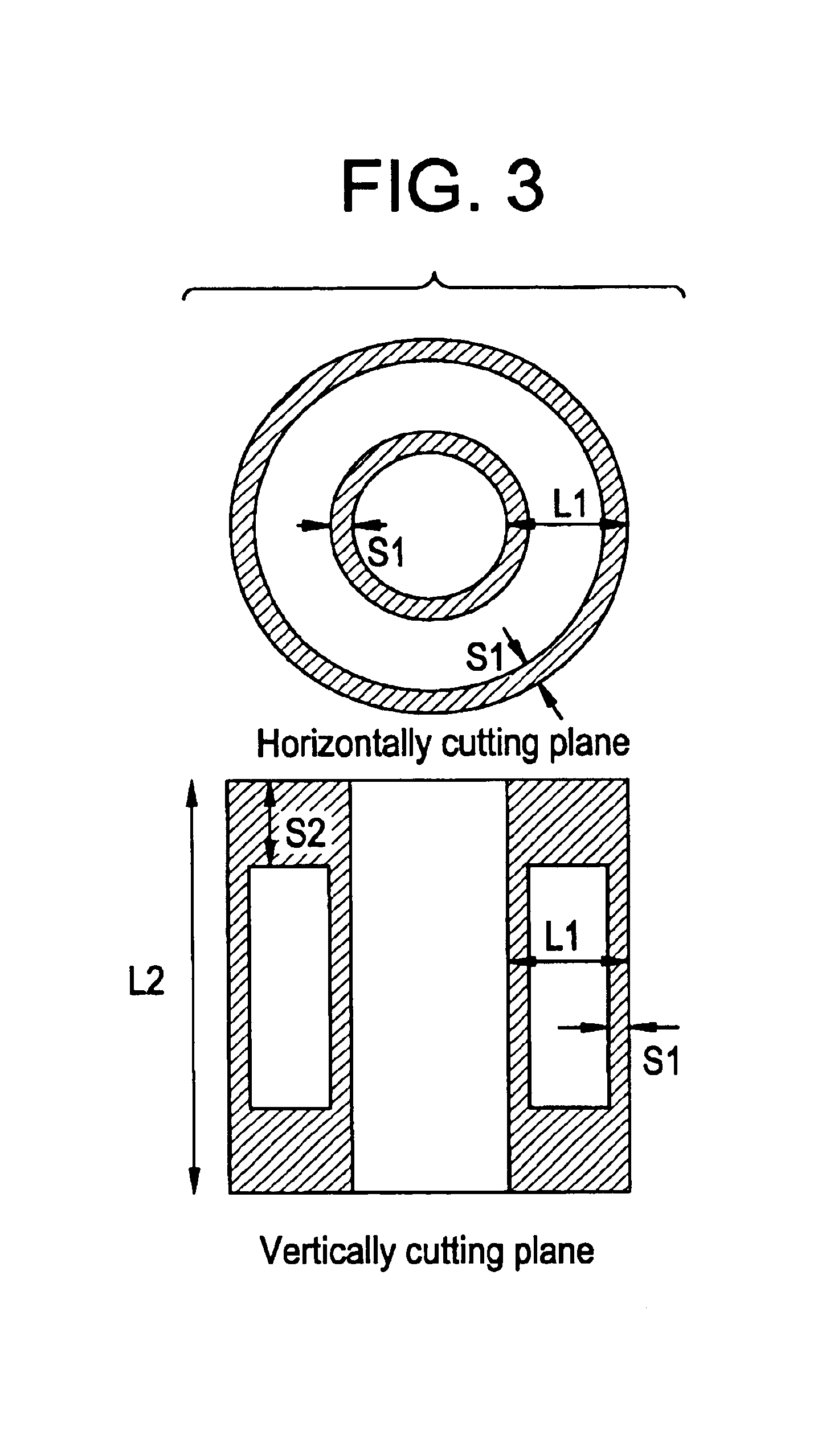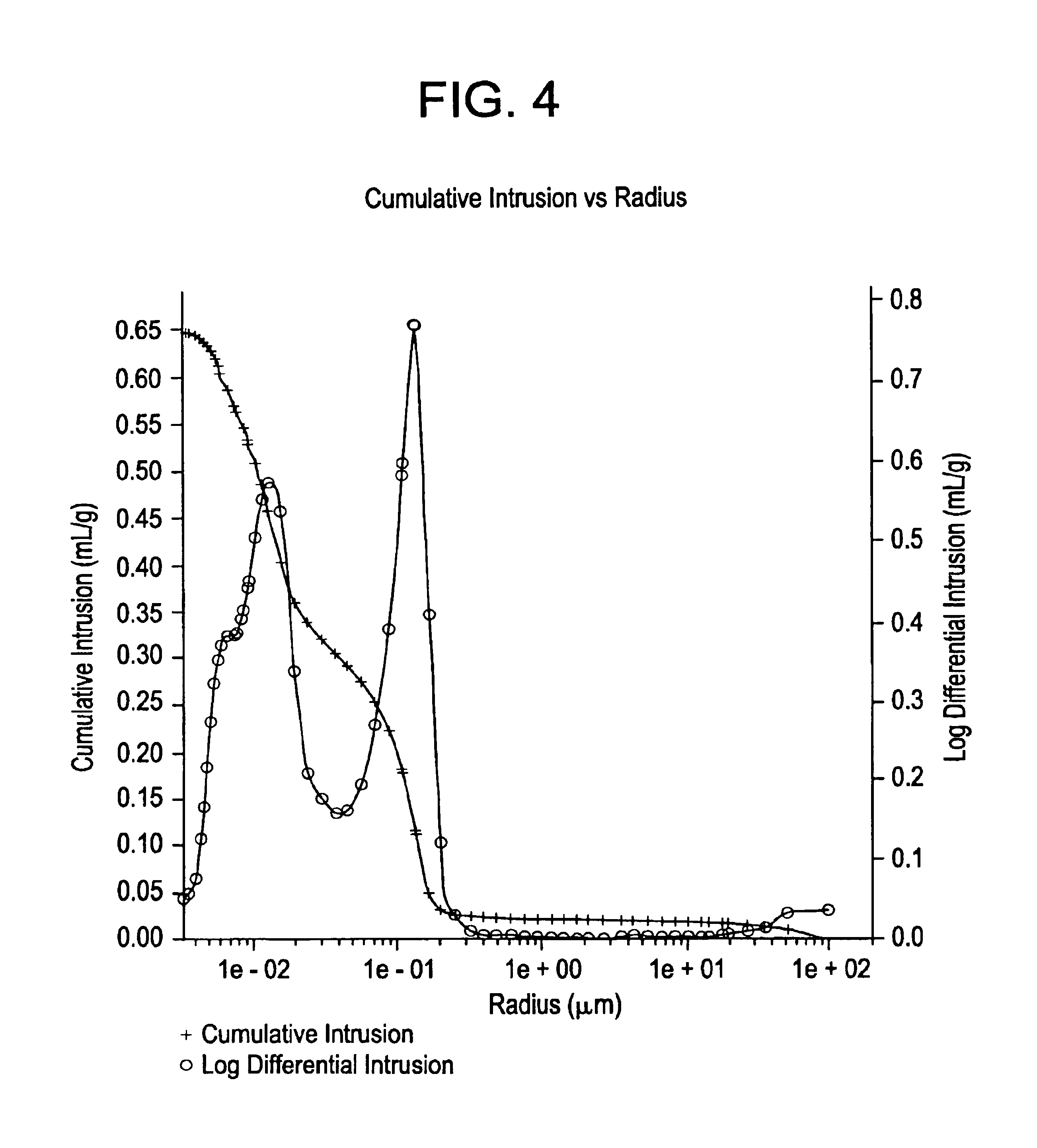Process for producing chlorine
a technology of chlorine and process, which is applied in the preparation of chlorides, physical/chemical process catalysts, metal/metal-oxide/metal-hydroxide catalysts, etc., can solve the problems of insufficient activity of catalysts, disadvantageous industrial use, and drastic volatilization of ruthenium compounds as catalyst components, etc., to facilitate the control of reaction temperature and easy removal of reaction heat. , the effect of high activity
- Summary
- Abstract
- Description
- Claims
- Application Information
AI Technical Summary
Benefits of technology
Problems solved by technology
Method used
Image
Examples
third embodiment
four kinds of the preparation processes is a process which comprises supporting an aqueous solution of ruthenium chloride on a powder of titanium oxide by impregnation. The amount of the ruthenium chloride to be used corresponds to a preferable ratio of the ruthenium oxide to the carrier of the catalyst Then, the supported one is dried. The dried one is reduced with a reducing hydrogenated compound such as sodium boron hydride or treated with a reducing compound such as hydrazine. The preparation process will be explained in detail hereinafter. Then, α-alumina is uniformly mixed. Then, a titanium oxide sol is added and a carrier of the catalyst is molded. The proportion of the titanium oxide sol is the same proportion as that shown in the first embodiment. Then, a catalyst is prepared by drying the molded one, calcining under air to oxidize ruthenium, and washing with water in the same manner as the process of preparing the supported ruthenium oxide catalyst, which will be explained...
fourth embodiment
four kinds of the preparation processes is a process which comprises supporting an aqueous solution of ruthenium chloride on a powder of titanium oxide by impregnation. The amount of the ruthenium chloride to be used corresponds to a preferable ratio of the ruthenium oxide to the carrier of the catalyst Then, the supported one is dried. The dried one is reduced with a reducing hydrogenated compound such as sodium boron hydride and then oxidized to prepare a supported ruthenium oxide catalyst. Alternatively, the dried one is treated with a reducing compound such as hydazine and then oxidized to prepare a supported ruthenium oxide catalyst. The preparation process will be explained in detail hereinafter. Then, α-alumina is uniformly mixed. Then, a titanium oxide sol is added and a carrier of the catalyst is molded. The proportion of the titanium oxide sol is the same proportion as that shown in the first embodiment. Then, the molded one is dried and then calcined under air. The calcin...
first embodiment
the process for preparing a supported ruthenium oxide catalyst used in the present invention includes a process for preparing a supported ruthenium oxide catalyst by reducing a ruthenium compound supported on a carrier of a catalyst by using a reducing hydrogenated compound, and oxidizing.
The ruthenium compound to be supported on the carrier of the catalyst includes the same compounds as those listed with respect to the catalysts (1), (2) and (3) of the present invention.
The reducing hydrogenated compound used for reducing the ruthenium compound supported on the carrier of the catalyst includes the same compounds as those listed with respect to the catalyst (3) of the present invention.
PUM
| Property | Measurement | Unit |
|---|---|---|
| weight | aaaaa | aaaaa |
| pore diameters | aaaaa | aaaaa |
| pore radius | aaaaa | aaaaa |
Abstract
Description
Claims
Application Information
 Login to View More
Login to View More - R&D
- Intellectual Property
- Life Sciences
- Materials
- Tech Scout
- Unparalleled Data Quality
- Higher Quality Content
- 60% Fewer Hallucinations
Browse by: Latest US Patents, China's latest patents, Technical Efficacy Thesaurus, Application Domain, Technology Topic, Popular Technical Reports.
© 2025 PatSnap. All rights reserved.Legal|Privacy policy|Modern Slavery Act Transparency Statement|Sitemap|About US| Contact US: help@patsnap.com



